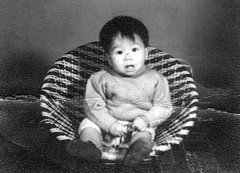In this study, though I would be engaged much time spent on the technical operation for my assignment, however I learnt that literature review should be done for my realization of background in which some thought from professionals contributed to representation theories. Multimedia could effectively facilitate language acquisition as well as language comprehension, and these connections provided learners with two types of cues for the retrieval of learned materials effectively as compared to only one when they learn with text only. I learnt from the following theories form the references of powerpoint in session 4 and agreed to use both cues as my represenation.
Theories of learning from texts and visual displays:
Dual Coding Theory
Majority of theories state that people can learn more deeply from words and pictures than from words alone (Mayer, 2005). According to Paivio’s (1986) dual coding theory, there are two cognitive subsystems, one specialized for the representation and processing of nonverbal objects/events (i.e., imagery), and the other specialized for dealing with language. Paivio also assumes two different types of representational units: "imagens" for mental images and "logogens" for verbal entities. Logogens are organized in terms of associations and hierarchies while imagens are organized in terms of part-whole relationships.
Theories of learning from texts and visual displays:
Dual Coding Theory
Majority of theories state that people can learn more deeply from words and pictures than from words alone (Mayer, 2005). According to Paivio’s (1986) dual coding theory, there are two cognitive subsystems, one specialized for the representation and processing of nonverbal objects/events (i.e., imagery), and the other specialized for dealing with language. Paivio also assumes two different types of representational units: "imagens" for mental images and "logogens" for verbal entities. Logogens are organized in terms of associations and hierarchies while imagens are organized in terms of part-whole relationships.

 Dual Coding theory identified three types of processing: (1) representational, the direct activation of verbal or non-verbal representations, (2) referential, the activation of the verbal system by the nonverbal system or vice-versa, and (3) associative processing, the activation of representations within the same verbal or nonverbal system. A given task may require any or all of the three kinds of processing.
Dual Coding theory identified three types of processing: (1) representational, the direct activation of verbal or non-verbal representations, (2) referential, the activation of the verbal system by the nonverbal system or vice-versa, and (3) associative processing, the activation of representations within the same verbal or nonverbal system. A given task may require any or all of the three kinds of processing. .
Multimedia Learning Theory
.
Mayer (1997) also developed a multimedia learning theory, which combined the assumptions of dual coding theory with the notion of multilevel mental representations. A main assumption of Mayer’s model is that verbal and pictorial information are processed in different cognitive subsystems, processing results in the parallel construction two mental models individually, and finally they are mapped onto each other. Accordingly, an individual understanding a text with pictures selects relevant words, constructs a prepositional representation or text base, and then organizes the selected verbal information into a verbal mental model of the situation described in the text. Similarly, the individual selects relevant images, creates what is called a pictorial representation or image base, and organizes the selected pictorial information into a visual mental model of the situation shown in the picture. The final step is to build connections through a one-to-one-mapping between the text-based model and the picture-based model. Integrative processing is most likely to occur if verbal and visual information are simultaneously available in working memory, that is, the corresponding entities in the two models are mentally available at the same time (Chandler & Sweller, 1991).
Integrative Model of Text and Picture Comprehension
Integrative Model of Text and Picture Comprehension
.
On the contrary, Schnotz (2002) holds another viewpoint who focuses not on pictures and text by itself, but on depictive (iconic) and descriptive (symbolic) representations. In this Integrative Model of Text and Picture Comprehension, mapping happens at the level of mental model construction and what results is not an integrated representation but complementary representations that can communicate with one another.
Other research throughout the 1990s has also demonstrated that visual displays have supportive effects on communication of information, thinking, and learning. Furthermore,
carefully constructed pictures as visual text adjuncts can not only have a decorative function, but also have functions of representation, organization, interpretation, and mnemonic encoding (Levin, Anglin & Carney, 1987).
Conclusion
Other research throughout the 1990s has also demonstrated that visual displays have supportive effects on communication of information, thinking, and learning. Furthermore,
carefully constructed pictures as visual text adjuncts can not only have a decorative function, but also have functions of representation, organization, interpretation, and mnemonic encoding (Levin, Anglin & Carney, 1987).
Conclusion
With the help of above theories, interactive multimedia undoubtedly provide evident to enhance the effectiveness of teaching and learning. As my knowledge, well-designed multimedia is very time-consuming and necessary for money input; however, If the interactive learning purposes are managed to reach and identified by viewer or learner with impression, it could be a valuable media to use. Thus, interactive multimedia can help teachers streamline their preparations of teaching materials and be more efficient in deliver the message, information, or knowledge to other people. As my assignment of traveling information, I hope to achieve the prominent objectives to fulfill the basic principles by above literature information.
References
Chandler, P., & Sweller, J. (1991). Cognitive load theory and the format of instruction. Cognitive and Instruction, 8, 293-332.
Mayer, R. E. (1997). Multimedia learning: Are we asking the right questions? Educational Psychologist, 32, 1-19.
Chandler, P., & Sweller, J. (1991). Cognitive load theory and the format of instruction. Cognitive and Instruction, 8, 293-332.
Mayer, R. E. (1997). Multimedia learning: Are we asking the right questions? Educational Psychologist, 32, 1-19.
Mayer, R. E. (2005). The Cambridge handbook of multimedia learning. New York: Cambridge University Press.
Paivio, A. (1986). Mental representations: A dual coding approach. Oxford, England: Oxford University Press.
Schnotz, W. (2002). Commentary - Towards an integrated view of learning from text and visual displays. Educational Psychology Review, 14(1), 101-120.
Schnotz, W. (2002). Commentary - Towards an integrated view of learning from text and visual displays. Educational Psychology Review, 14(1), 101-120.









2 comments:
Hi,
After reading your posts, I can learn many knowledge from your blog.
Great info
custom logo design
Post a Comment